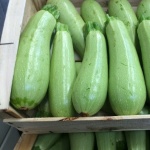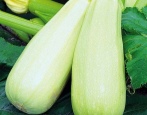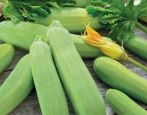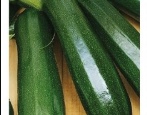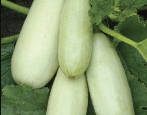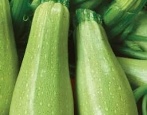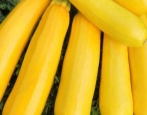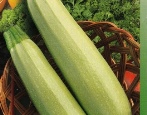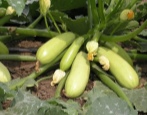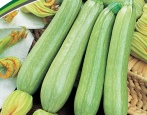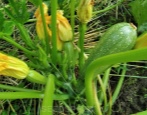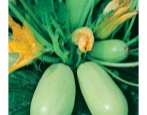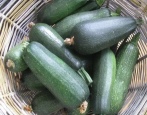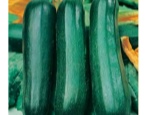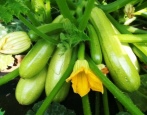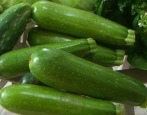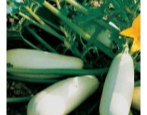
- Authors: Gavrish S.F., Morev V.V., Amcheslavskaya E.V., Volok O.A.
- Year of approval: 2013
- Ripening terms: early maturing
- The period from germination to harvest: 40-43 days
- Description of the plant: compact, with a high degree of female flower formation
- Leaves: medium, green, no mottling, dissected
- Fruit shape: elongated-cylindrical
- Fruit color: black-green
- Color of the pulp: light beige
- Pulp (consistency): dense
Zucchini are loved by many, so they are massively grown in almost every area. For a high yield and tasty vegetables, you should choose varieties that adapt to the climatic characteristics of the growing area. For the Central region, the early-ripening Drakosha variety, created by domestic scientists, will be a good choice.
Breeding history
Drakosha's zucchini was bred by a group of breeders of the agricultural firm "Gavrish" in 2010. After variety trials in 2013, the vegetable crop was added to the State Register of Admitted to Use. The authorship belongs to Amcheslavskaya E.V., Volok O.A., Morev V.V. and Gavrish S.F. The vegetable is zoned in the Central region. Zucchini is grown mainly in garden ridges. In addition, Drakosha is grown on the territory of Moldova and Ukraine.
Description of the variety
Drakosha is a bush type plant. The zucchini bush is characterized by moderate branching of branches, medium foliage with green foliage with dissected ends, shortened internodes. A distinctive feature is the uniform color of the leaves without light blotches, as well as the compactness of the bush, which is not prone to overgrowth. During the flowering period, light yellow flowers of a predominantly female type appear on the bushes.
Characteristics of the appearance of plants and fruits
The early Drakosha variety belongs to the large-fruited class. Vegetables grow neat and aligned. On average, the mass of zucchini ranges from 600 grams to a kilogram. The length of the fruits reaches 15 cm, and the diameter is 8 cm. Ripe zucchini are endowed with an unusual color - dark green, sometimes they are black and green. The shape of the vegetable is elongated-cylindrical. Sometimes zucchini take on a slightly arcuate-cylindrical shape.
The surface of the vegetable marrow is smooth, shiny, with slight ribbing, but without other irregularities. The peel is characterized by its thinness, strength and elasticity, due to which ripened vegetables can tolerate transportation and can be stored for a long time in a cool and dry place. For long-term keeping quality, neatly cut specimens are suitable.
Purpose and taste
Drakosh zucchini are famous for their high taste. The light beige pulp has a dense, tender, juicy pulp without fiber or voids. The taste of the vegetable is balanced, slightly tender and oily. The inside of the pulp contains a small amount of medium-sized creamy seeds.
Ripe zucchini have a wide range of uses in cooking - they are fried, stuffed, stewed, frozen, canned, processed into caviar and salads. In addition, this variety is ideal for baby and dietetic food.
Ripening terms
The variety belongs to the early maturing varieties. The growing season lasts about 40-43 days. Harvesting begins in July. Fruiting lasts for several months. To prevent vegetables from overripe, it is recommended to harvest them every 3-4 days. The most delicious specimens are considered to be up to 14-15 cm long.
Yield
This variety is high yielding. On average, about 7-8 kg of juicy fruits can be harvested from one bush per season. 10-11 kg of vegetables are harvested from 1 m2 of plantings. On an industrial scale, the average yield is also pleasing - 709-725 c / ha of plantings.
Growing and care
Zucchini is cultivated by seedling and seed methods. It is the second method that is simpler and more productive. Sowing seeds in open ground is carried out from late May to early June, when the soil and air are well warmed up, and recurrent night frosts are unlikely. Planting is carried out according to the standard scheme for zucchini - 70x70 cm. The seeds are buried in the soil by 4-5 cm. Tomatoes, cabbage, radishes and carrots are good predecessors for Drakosha zucchini.
The agricultural technology of vegetable crops consists of basic measures: regular watering every 5-7 days at the root, top dressing three times per season (the vegetable prefers organic fertilizers), weeding and loosening of the soil, mulching and prevention of viruses.
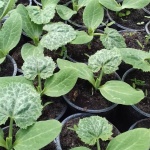
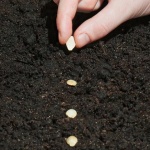
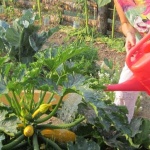
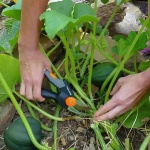
Soil requirements
Zucchini is comfortable to grow and develop in light, fertile, breathable and moisture-permeable soils with low or neutral acidity. Nutritious sandy loam or loamy soil is optimal.
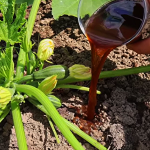
Required climatic conditions
Despite the fact that the vegetable crop is stress-resistant, tolerates temperature fluctuations and slight drought well, it is recommended to plant it in sunny areas protected from drafts. In addition, the vegetable does not react well to waterlogging and stagnant water.
Disease and pest resistance
Due to its strong immunity, the vegetable is rarely exposed to viral and bacterial infections. Violation of agrotechnical recommendations or unfavorable weather conditions can provoke diseases.
